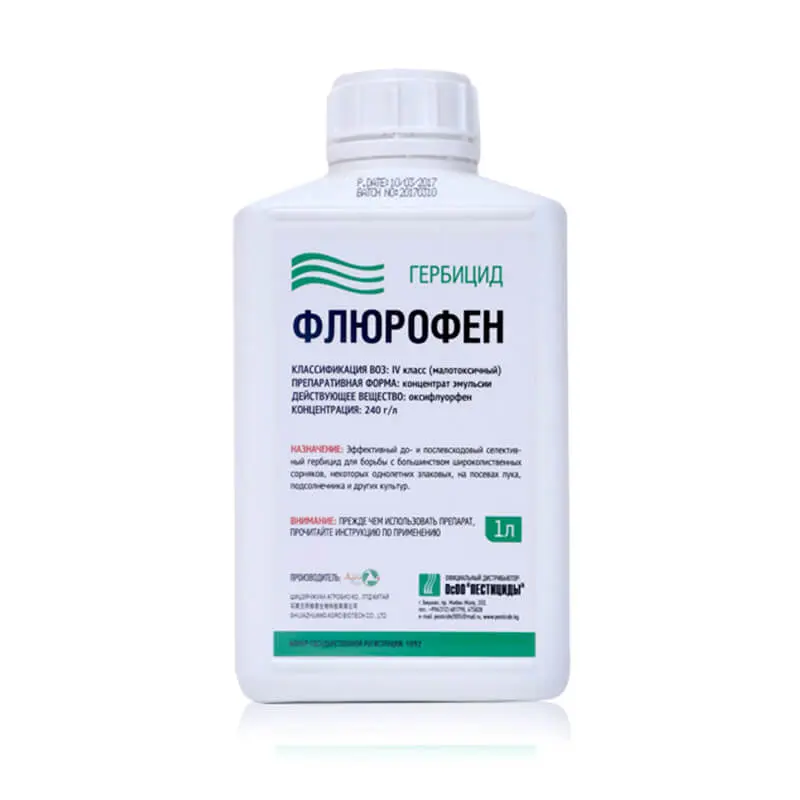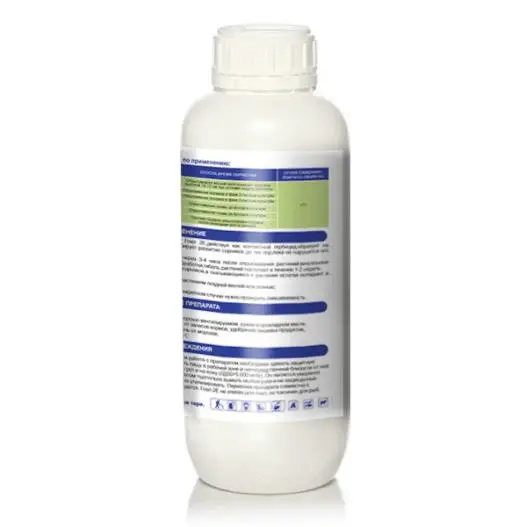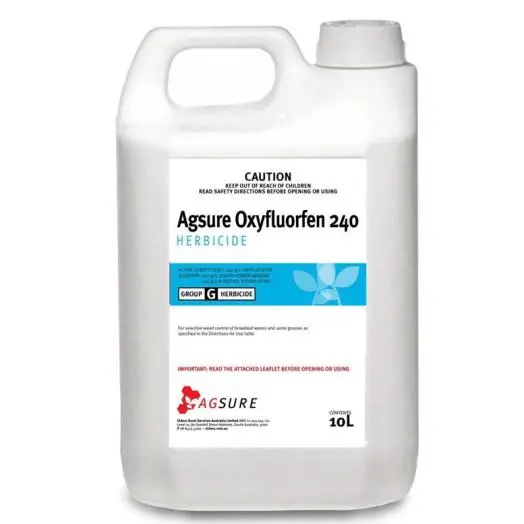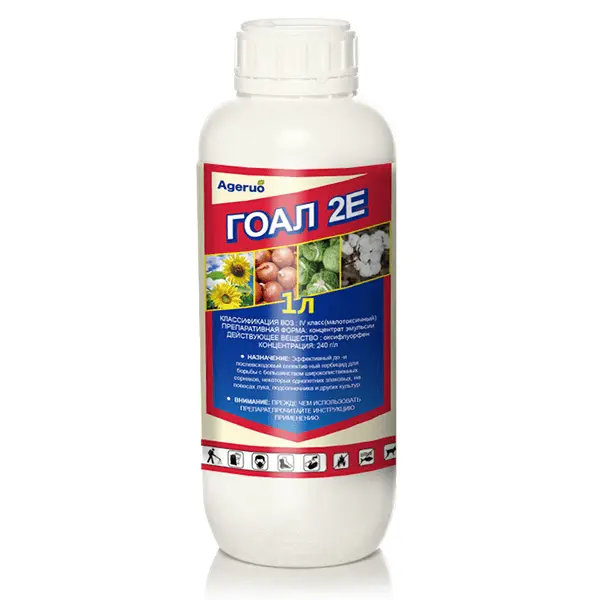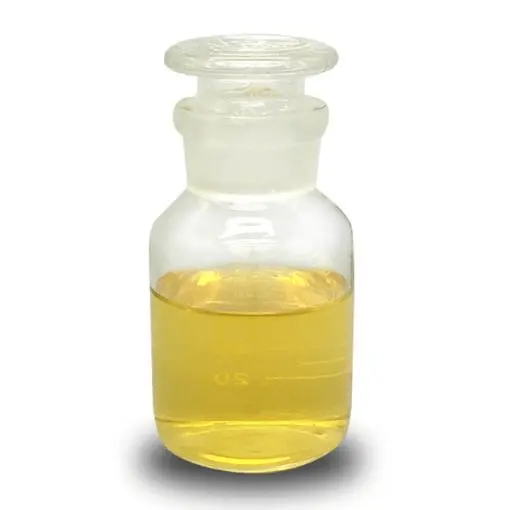Oxyfluorfen Herbicide: Uses, Dosage, and Mode of Action Explained
Oxyfluorfen is a widely used herbicide that is effective in controlling a variety of broadleaf weeds and grasses in multiple agricultural settings. This contact herbicide, part of the diphenyl ether group, plays a crucial role in weed management in crops such as onions, tomatoes, rice, and more. In this article, we will delve into Oxyfluorfen’s uses, dosage recommendations, and mode of action, offering practical guidance for effective application.
What is Oxyfluorfen Herbicide?
Oxyfluorfen is a selective herbicide known for its ability to control broadleaf weeds and grasses in a range of crops. It is primarily used in pre-emergence and post-emergence applications, ensuring effective control of annual weeds and perennial weeds that may compete with valuable crops for nutrients, water, and light. Oxyfluorfen is available in various formulations, including emulsifiable concentrates (EC), making it easy to apply and highly effective.
Oxyfluorfen Herbicide Uses
Oxyfluorfen is primarily used in agricultural settings, particularly in onion farming and other vegetable crops. Below are some of the common uses of Oxyfluorfen in agriculture:
-
Onion Cultivation: Oxyfluorfen is highly effective for weed control in onions. It helps to keep broadleaf weeds and grasses at bay during early growth stages, allowing the onions to establish themselves without competition for nutrients and light. It is used both pre-planting and post-planting to provide continuous protection.
-
Vegetable Crops: It is also used in the control of weeds in other vegetable crops such as tomatoes, peppers, and cucumbers, especially when there is a need for broad-spectrum weed control.
-
Fruit Crops and Orchards: Oxyfluorfen is applied in fruit orchards and nut crops to manage weeds that can interfere with crop production.
-
Non-Crop Areas: In addition to crop protection, Oxyfluorfen is used to control weeds in non-crop areas like railways, highways, and industrial landscapes.
Oxyfluorfen Herbicide Dosage Recommendations
Proper dosage is crucial for the effective application of Oxyfluorfen. Applying too much or too little can result in ineffective weed control or crop damage. Below are general dosage guidelines for Oxyfluorfen applications:
-
Onion Fields: The typical dosage of Oxyfluorfen in onion fields is around 0.5 to 1.0 liter per hectare. For best results, apply Oxyfluorfen in the early stages of onion growth, either pre-planting or post-emergence, when weeds are still young and actively growing.
-
Vegetable and Crop Fields: For other vegetable crops, Oxyfluorfen is applied at rates ranging from 0.5 to 1.0 liter per hectare, depending on weed pressure and crop type. Always refer to the product label for specific dosage and application intervals.
-
Non-Crop Areas: In non-crop areas, the dosage can be 1 to 2 liters per hectare. This higher dosage is necessary for tougher weeds and larger areas.
Always calibrate your sprayer or equipment to ensure proper application and achieve effective weed control without overuse of the herbicide.
Oxyfluorfen Herbicide Mode of Action
Understanding the mode of action of Oxyfluorfen is essential for effective weed control. Here’s how Oxyfluorfen works:
-
Contact Herbicide Action:
- Oxyfluorfen acts primarily as a contact herbicide, meaning it affects only the parts of the plant it comes into direct contact with. When applied to weeds, Oxyfluorfen disrupts the cell membranes, leading to the destruction of plant tissues.
-
Inhibition of Photosynthesis:
- The herbicide inhibits photosynthesis by blocking the formation of chlorophyll in the plant. This results in the rapid yellowing and wilting of treated weeds, eventually causing them to die.
-
Broad-Spectrum Control:
- Oxyfluorfen is effective on both broadleaf weeds and grasses, making it a versatile herbicide for a variety of crops. It is especially effective against weeds that are typically resistant to other herbicides.
-
Residual Activity:
- One of the key benefits of Oxyfluorfen is its residual action. After application, Oxyfluorfen continues to control weeds for several weeks, preventing new weed germination and reducing the need for reapplication.
Best Practices for Using Oxyfluorfen Herbicide
To maximize the effectiveness of Oxyfluorfen, follow these best practices:
-
Timing: Apply Oxyfluorfen during the early stages of weed germination for the best control. It is particularly effective pre-emergence when weeds are still in the early seedling stage.
-
Avoid Overuse: Follow the recommended dosage to prevent crop damage and excessive herbicide buildup in the soil.
-
Monitor Weed Resistance: Use Oxyfluorfen as part of an integrated weed management strategy to manage herbicide-resistant weed populations effectively. Rotate with other herbicides to prevent resistance.
-
Environmental Considerations: Always follow safety guidelines to minimize environmental impact. Avoid applying Oxyfluorfen near water bodies, as it can affect aquatic life.
Conclusion
Oxyfluorfen 23.5 EC is a highly effective herbicide for weed control in onions, vegetable crops, and non-crop areas. Understanding the dosage, mode of action, and application guidelines is essential for safe and effective use. By following the best practices and using the recommended dosage, you can ensure maximum protection against weeds without damaging your crops. Whether you are growing onions or managing weeds in your garden, Oxyfluorfen remains a valuable tool for maintaining weed-free environments and enhancing crop yields.
Frequently Asked Questions (FAQs)
-
What crops can I use Oxyfluorfen on?
- Oxyfluorfen is used in a variety of crops, including onions, tomatoes, peppers, and rice. It is also effective in non-crop areas like lawns and railways.
-
How should I apply Oxyfluorfen to my onion field?
- Apply Oxyfluorfen to onion fields at a rate of 0.5 to 1.0 liter per hectare before planting or early in the growing season to control weeds.
-
What is the mode of action of Oxyfluorfen?
- Oxyfluorfen works by disrupting photosynthesis and affecting cell membranes, causing weeds to die. It has residual activity and provides long-lasting weed control.
-
Can I use Oxyfluorfen for weed control in vegetable gardens?
- Yes, Oxyfluorfen is effective for weed control in vegetable gardens. Apply according to the product label to avoid harming crops.
-
Is Oxyfluorfen safe for the environment?
- Oxyfluorfen should be applied with care to avoid contamination of water sources. Follow environmental safety guidelines to reduce impact on aquatic life.
Oxyfluorfen is a widely used herbicide that is effective in controlling a variety of broadleaf weeds and grasses in multiple agricultural settings. This contact herbicide, part of the diphenyl ether group, plays a crucial role in weed management in crops such as onions, tomatoes, rice, and more. In this article, we will delve into Oxyfluorfen’s uses, dosage recommendations, and mode of action, offering practical guidance for effective application.
What is Oxyfluorfen Herbicide?
Oxyfluorfen is a selective herbicide known for its ability to control broadleaf weeds and grasses in a range of crops. It is primarily used in pre-emergence and post-emergence applications, ensuring effective control of annual weeds and perennial weeds that may compete with valuable crops for nutrients, water, and light. Oxyfluorfen is available in various formulations, including emulsifiable concentrates (EC), making it easy to apply and highly effective.
Oxyfluorfen Herbicide Uses
Oxyfluorfen is primarily used in agricultural settings, particularly in onion farming and other vegetable crops. Below are some of the common uses of Oxyfluorfen in agriculture:
-
Onion Cultivation: Oxyfluorfen is highly effective for weed control in onions. It helps to keep broadleaf weeds and grasses at bay during early growth stages, allowing the onions to establish themselves without competition for nutrients and light. It is used both pre-planting and post-planting to provide continuous protection.
-
Vegetable Crops: It is also used in the control of weeds in other vegetable crops such as tomatoes, peppers, and cucumbers, especially when there is a need for broad-spectrum weed control.
-
Fruit Crops and Orchards: Oxyfluorfen is applied in fruit orchards and nut crops to manage weeds that can interfere with crop production.
-
Non-Crop Areas: In addition to crop protection, Oxyfluorfen is used to control weeds in non-crop areas like railways, highways, and industrial landscapes.
Oxyfluorfen Herbicide Dosage Recommendations
Proper dosage is crucial for the effective application of Oxyfluorfen. Applying too much or too little can result in ineffective weed control or crop damage. Below are general dosage guidelines for Oxyfluorfen applications:
-
Onion Fields: The typical dosage of Oxyfluorfen in onion fields is around 0.5 to 1.0 liter per hectare. For best results, apply Oxyfluorfen in the early stages of onion growth, either pre-planting or post-emergence, when weeds are still young and actively growing.
-
Vegetable and Crop Fields: For other vegetable crops, Oxyfluorfen is applied at rates ranging from 0.5 to 1.0 liter per hectare, depending on weed pressure and crop type. Always refer to the product label for specific dosage and application intervals.
-
Non-Crop Areas: In non-crop areas, the dosage can be 1 to 2 liters per hectare. This higher dosage is necessary for tougher weeds and larger areas.
Always calibrate your sprayer or equipment to ensure proper application and achieve effective weed control without overuse of the herbicide.
Oxyfluorfen Herbicide Mode of Action
Understanding the mode of action of Oxyfluorfen is essential for effective weed control. Here’s how Oxyfluorfen works:
-
Contact Herbicide Action:
- Oxyfluorfen acts primarily as a contact herbicide, meaning it affects only the parts of the plant it comes into direct contact with. When applied to weeds, Oxyfluorfen disrupts the cell membranes, leading to the destruction of plant tissues.
-
Inhibition of Photosynthesis:
- The herbicide inhibits photosynthesis by blocking the formation of chlorophyll in the plant. This results in the rapid yellowing and wilting of treated weeds, eventually causing them to die.
-
Broad-Spectrum Control:
- Oxyfluorfen is effective on both broadleaf weeds and grasses, making it a versatile herbicide for a variety of crops. It is especially effective against weeds that are typically resistant to other herbicides.
-
Residual Activity:
- One of the key benefits of Oxyfluorfen is its residual action. After application, Oxyfluorfen continues to control weeds for several weeks, preventing new weed germination and reducing the need for reapplication.
Best Practices for Using Oxyfluorfen Herbicide
To maximize the effectiveness of Oxyfluorfen, follow these best practices:
-
Timing: Apply Oxyfluorfen during the early stages of weed germination for the best control. It is particularly effective pre-emergence when weeds are still in the early seedling stage.
-
Avoid Overuse: Follow the recommended dosage to prevent crop damage and excessive herbicide buildup in the soil.
-
Monitor Weed Resistance: Use Oxyfluorfen as part of an integrated weed management strategy to manage herbicide-resistant weed populations effectively. Rotate with other herbicides to prevent resistance.
-
Environmental Considerations: Always follow safety guidelines to minimize environmental impact. Avoid applying Oxyfluorfen near water bodies, as it can affect aquatic life.
Conclusion
Oxyfluorfen 23.5 EC is a highly effective herbicide for weed control in onions, vegetable crops, and non-crop areas. Understanding the dosage, mode of action, and application guidelines is essential for safe and effective use. By following the best practices and using the recommended dosage, you can ensure maximum protection against weeds without damaging your crops. Whether you are growing onions or managing weeds in your garden, Oxyfluorfen remains a valuable tool for maintaining weed-free environments and enhancing crop yields.
Frequently Asked Questions (FAQs)
-
What crops can I use Oxyfluorfen on?
- Oxyfluorfen is used in a variety of crops, including onions, tomatoes, peppers, and rice. It is also effective in non-crop areas like lawns and railways.
-
How should I apply Oxyfluorfen to my onion field?
- Apply Oxyfluorfen to onion fields at a rate of 0.5 to 1.0 liter per hectare before planting or early in the growing season to control weeds.
-
What is the mode of action of Oxyfluorfen?
- Oxyfluorfen works by disrupting photosynthesis and affecting cell membranes, causing weeds to die. It has residual activity and provides long-lasting weed control.
-
Can I use Oxyfluorfen for weed control in vegetable gardens?
- Yes, Oxyfluorfen is effective for weed control in vegetable gardens. Apply according to the product label to avoid harming crops.
-
Is Oxyfluorfen safe for the environment?
- Oxyfluorfen should be applied with care to avoid contamination of water sources. Follow environmental safety guidelines to reduce impact on aquatic life.

